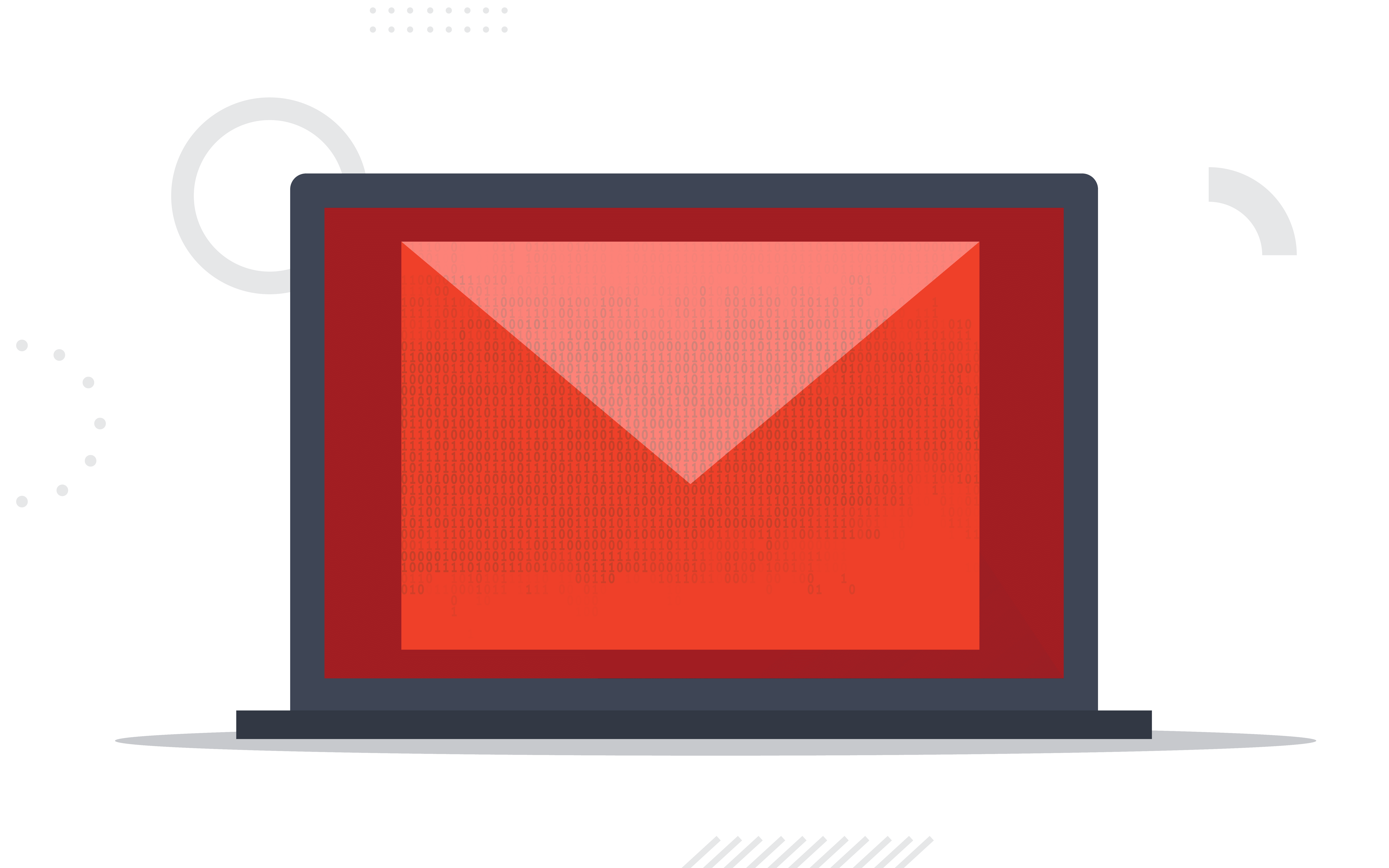
Remember back in grade school when everyone hated math? Even today, it seems like a lot of people, especially marketing creatives, have an extreme fear of numbers and want nothing to do with them.
While numbers may be intimidating for many people, they play a critical role in the marketing world, especially when it comes to email marketing. Email marketing is so much more than writing an email and sending it off to a potential buyer. It requires a significant amount of data to see how the email marketing campaigns perform. And if they’re not performing well, what can be changed to boost lead conversions?
What Email Marketing Data Should Be Analyzed?
Before you start gathering and analyzing email marketing metrics, it’s crucial to understand what you should be measuring and what they mean for your lead generation efforts. Here are some email marketing metrics and key performance indicators (KPIs) you should measure for your marketing efforts:
Clickthrough Rate
The clickthrough rate tells how many email recipients engage with your sales email. According to CampaignMonitor, the average clickthrough rate for B2B emails is 2.1% to 3.2%.
Conversion Rate
The conversion rate tells you how many email recipients converted from prospects into leads. Transactional emails have higher conversion rates than general sales emails because you encourage the recipient to be more invested in your company.
Bounce Rate
A bounce rate is the percentage of your sent emails that were not successfully delivered to the recipient’s email address. This is because marketers send emails to an incorrect or nonexistent domain.
List Growth Rate
List growth rate is the percentage rate your email list grows over time. An email list can grow by using prospecting technologies like ZoomInfo or inbound methods where potential buyers voluntarily input their info to receive more sales and marketing materials from your company.
Email Sharing
Email sharing is the number of times an email recipient clicks on the “Share This” or “Forward to a Friend” button. An email recipient could be sharing an email with the correct key decision-maker or with another prospect that could benefit from your company’s product or service offerings.
Open Rate
Open rate tells you how many prospects opened a specific email. Referring back to the CampaignMonitor study, the average open rate for B2B emails is 15.1%.
Unsubscribe Rate
Unsubscribe rate is the percentage of prospects that opened your email and clicked on the unsubscribe button. If your email marketing unsubscribe rates are higher than average, you may need to reconsider your email marketing approach.

How Data Analytics Can Maximize Your Email Marketing Strategy
Numbers and data aren’t so scary when you think of the benefits they can bring to your email marketing efforts. Many B2B marketers use data analytics in email marketing to help:
Personalize Email Messaging
Research shows that personalized emails result in 6 times higher transaction rates than generic email blasts, and 70% of brands fail to practice this email marketing strategy. However, the good news is that this enables your email marketers to take advantage of this best practice and stand out among competitors.
When marketers think of personalizing marketing messaging, they typically include the lead’s name in the subject line and email. While this is a great way to personalize messaging, there are other ways to make the content unique to the lead. For example, consider:
- Asking for the best information. Before you press “send” on your email blasts, make sure you’re asking email recipients for the right information when you’re requesting them to fill out a form. Asking for their name, company name, and company location enables your marketers to personalize each interaction, accelerating the relationship with the lead. By gathering this information, you can use the data to send specific emails that align with their industry, company size, and location.
- Using a reply-to email address. Unfortunately, many businesses use domains like donotreply@exampledomain.com to send email marketing assets. When you use these domains, you limit the opportunity to connect with prospects who may have questions and be interested in learning more about what you have to offer them. To optimize your email marketing efforts, consider using an email that prospects can respond to.
- Including an email signature. Using an email signature gives the prospect more insight into who is contacting them, their credentials, and other avenues of communication. Your email signature should include your full name, title, email address, office phone number, and professional social media channels. This gives them a chance to look you and your company up on LinkedIn to gain more insight into your company.
Segment Your Email List Based on Similarities
As mentioned above, asking for crucial information about a company in a form allows you to personalize email messaging better. Additionally, this data enables you to segment each lead based on similarities. This helps your B2B marketers send leads information that resonates with their industry, company size, and location.
For example, let’s suggest that your software company attend a networking event in St. Louis. In this case, you can send an email blast to prospects in the sales pipeline who are located in St. Louis, encouraging them to attend the event and connect with one of your reps in person.
In addition to segmenting leads by industry, company size, and location, many B2B marketers like to segment leads based on their current stage in the sales cycle. For instance, a sales email that goes to a lead in the awareness phase of the buyer’s journey should be less transaction-focused than a lead in the consideration phase of the buyer’s journey. This allows you to meet the leads where they’re at in the decision-making process without pushing them away with too many sales-y materials.
While segmenting your email list may sound hectic, it can be done quickly with a customer relationship management (CRM) platform. A CRM allows you to organize each lead in the sales pipeline based on similarities, cutting down the chaos for your email marketers.
Using big data to segment your target audience allows you to boost:
- Open rates
- Revenue
- Deliverability
- Conversions
Abstrakt’s outsourced email marketing specialists segment leads based on similarities, resulting in more conversions. Discover how our Outbound BDR solution uses cold email marketing for lead generation.
Optimize Email Campaigns for Mobile Devices
Today, more than 61% of people view emails from mobile devices rather than desktops. If your sales emails aren’t optimized for mobile devices, you risk losing a big chunk of your audience because they’ll either delete the email from their inbox or hit the unsubscribe button.
If you notice a significant spike in prospect unsubscribing from your email, checking your email’s mobile friendliness may be a good place to start. Here are some ways you can make sure your email campaigns are optimized for mobile users:
- Implement responsive email design (RED). A RED ensures that no matter what device a user is reading an email on, it will be optimized for easy readability. This ensures that the email is user-friendly and reduces the risk of deleting the email.
- Keep your subject line short and sweet. A subject line is the first experience a reader has with an email. If a subject line is too long or hard to understand, you risk an immediate deletion before the recipient even gives your email a chance.
- Make sure your call-to-action (CTA) is obvious. Every sales email should serve a purpose to a reader. Whether it’s directing them to your website or encouraging them to schedule a sales appointment with your company, your CTA should be clear so they know what you want them to do with the information provided to them.
While mobile-friendliness plays a role in unsubscribe rates, it’s also important to take a look at the content to make sure it’s not stale or needs refreshing. If you have been routinely following the same content pattern and schedule, it may be time to change things up a bit.
Practice Email Marketing Automation
Many B2B marketers fear email marketing automation because they believe that it limits their ability to personalize emails. However, this is far from the truth.
Email marketing automation is a crucial component of a company’s email marketing efforts. It allows your team to focus more on crafting the perfect sales email rather than the tedious process of sending it individually.
Marketers use data to develop promotional strategies and send trigger emails based on a lead’s behavior and engagement with an email. A few of the most common trigger emails are “Welcome” and “Thank You” emails, which are sent to individuals after they perform an action. This could include purchasing online or downloading a guide or e-book from your website. This integrates the individual into ongoing email marketing campaigns that encourage customer loyalty.
Best Tracking Tools To Implement for a Data-Driven Marketing Strategy
Google Analytics
Google Analytics is a great tool for reporting and measuring email traffic to your website. Through Google Analytics, you have the opportunity to segment users that come from your email marketing efforts and analyze how they navigate throughout your website.
Hubspot
As mentioned earlier, CRM platforms are a game-changer when it comes to maximizing your email marketing efforts. When you choose HubSpot as your preferred CRM software, you have the opportunity to implement, analyze, and automate email marketing efforts. Depending on your HubSpot plan, you can implement HubSpot extensions to see how email recipients are engaging with emails, allowing you to distribute more sales emails that align with their activity.
Outreach
Outreach enables marketing teams to create and send professional email marketing campaigns. This platform allows B2B marketers to build, personalize, and segment email lists for advanced email marketing efforts. With this software, you can streamline email marketing efforts from a single platform, simplifying communication and tracking.
GlockApps
GlockApps is an email marketing tool that aids email deliverability. GlockApps features:
- Email Deliverability Tests: Reports any potential issues
- Blacklist Monitors: Monitors your domain authority, preventing blacklisting
- DMARC Analyzer: Detects and prevents phishing attacks on your domain
- Template Editor: Reviews content to check for errors
- Automatic Inbox Tests: Lets you know if your email is sent to spam
- Uptime Monitors: Sends you deliverability reports in real time
Key Takeaways
While numbers and data can be intimidating for many marketing creatives, they provide significant benefits to email marketing efforts. An email marketing strategy without data is ineffective because there’s no way to scale how prospects are engaging with content. Using data to drive email marketing efforts allows you to understand what email marketing content resonates with users and where it may be falling short.
At Abstrakt Marketing Group, our cold email marketing specialists use data to drive our clients’ email marketing efforts. We use the following data to determine the effectiveness of our email marketing campaigns:
- Conversion rates
- Engagement rates
- Open rates
- Reply rates
- Unsubscribe rates
Our email marketing specialists help clients in various industries create, distribute, and analyze email marketing campaigns to secure high-quality B2B sales appointments. When you’re ready to start growing your business with professional cold email marketing efforts, contact the experts at Abstrakt!


